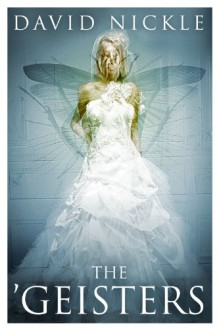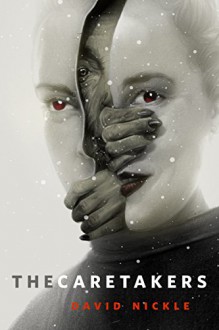
Full review at
Bookgasm:
A few short sentences form the first chapter of David Nickle’s slow-burner of a ghost story. The protagonist, Ann, muses that terror and love always seemed “indistinguishable” to her.
Then we switch gears to a rather dull first date, a very gray-flannel man wooing her over dinner. Michael’s not quite the milquetoast he seems, but then she’s not so much a mouse, either. Objects on the table begin spinning without cause, and Ann rushes off to the restroom, trying to shake off the fear, while Michael sits rapt at the table.
As we learn through the next half of the novel, in a devious, wonderfully dread-inducing series of flashbacks and forward motion, Ann is afflicted with a longtime companion: a violent poltergeist who’s raised hell whenever she becomes too intimate with anyone. That, alas, is exactly what Michael (and a mysterious cadre of men behind him) is seeking: intimacy at the edge of terror and death.
To say too much more would undermine two of THE ’GEISTERS’ serious pleasures. As in the best ghost stories, its haunting teases from the corner of the frame, finally shuffling on to center stage after the bumps and shrieks and whispers have the reader shivering in delicious uncertainty — not knowing what’s happening, but dead sure that it’ll be terrible.
And then (serious pleasure number two) the reveal is quite unlike most any ghost story I’ve ever read, and where Nickle travels next is new territory. (There are hints of Stephen King and David Cronenberg, and an explicit hat tip to Shirley Jackson for the spirit’s deep-seated roots in psychosexual dysfunction … but Nickle helps us see these conventions anew.)
Certain core obsessions — both his characters’ and the author’s — recur throughout Nickle’s fiction. The title of his excellent story collection, MONSTROUS AFFECTIONS, sums things up precisely. His horror plants a flag at the intersection between what we desire and what repels. The unnerving cover of that book was, according to Internet gossip, the subject of customer complaints at an airport bookstore. (They demanded that the book with its portrait of a melon-headed, Muppety-mouthed man be taken off the shelves and hidden. They couldn’t stop staring at that blank face.) Yet the stories, like that picture, seem deceptively harmless. Nickle’s a master in rebranding (or revealing) the bland as strangely perverse.
And, as any horror reader will freely admit, there’s a delirious, visceral thrill in — and desire for — that rush of fear. Nickle consistently returns to desire as a dangerous force, as a form of terror. The desire to control deforms (in the mind-controlling geopolitical conspiracies of RASPUTIN’S BASTARDS, or the quest for the perfection of the species in EUTOPIA). Or, put another way, desire deforms — explodes — any attempt to control. Or, maybe, deep down, if we really pay attention, desire itself is always deeply strange, unnerving, spooky.
This novel returns to but amplifies those rich thematic obsessions. However, even if you step away from the lit-nerd’s noodling with this “deep” stuff and just strap in for the ride, THE ’GEISTERS is a gas. There are set pieces in a car and a plane and a motel room that have a Hitchockian flair for suspense. (Interestingly, where most ghost stories fixate on a specific physical location, by shifting the locus of the ghostly into the body of the protagonist, each space Ann enters is freshly reborn as a haunted house.)
The book doesn’t just explore the attractiveness of terror — it embodies it in a narrative that demands (excites even as it repels) your attention. It’s a(nother) strong novel by one of the best, most interesting horror writers working today.

 Yet another cracking cover from Tor.
Yet another cracking cover from Tor. 
 Log in with Facebook
Log in with Facebook 








